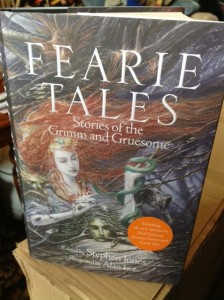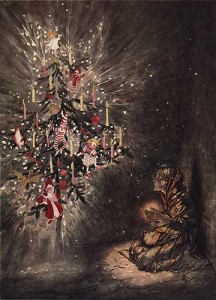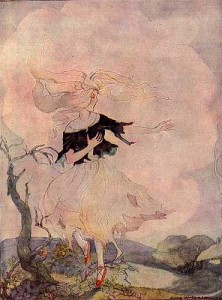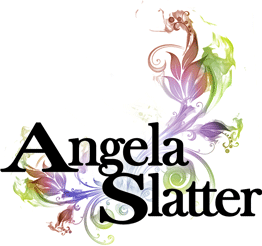 And today I, errr, interview myself about my Fearie Tales story, “By the Weeping Gate”.
And today I, errr, interview myself about my Fearie Tales story, “By the Weeping Gate”.
SEE, HERE?
This house here in Breakwater, this one, by the Weeping Gate where men and women come to wait and weep for those lost to the sea. This house is very fine, given the notoriety of the canton in which it resides – indeed, given the notoriety of its inhabitants.
The front stairs are swept daily by the girl who tends to such things (more of Nel later); the façade is cleverly created, a parquetry of stones coloured from cream through to ochre, some look as red as rubies, all creating a mosaic of florals and vines (the latter use malachite tiles). There is nothing like it anywhere else in the port city and there are uncharitable souls who whisper its existence is owed solely to the artisans’ truck with magic. The windows are always clean and shine like crystals, but none may see inside due to the heavy brocade drapes hung within.
1. What is the fairy tale you remember most from your childhood ? the one  that made the biggest impression on you?
that made the biggest impression on you?
I’ve said it before and I’ll say it again: “The Little Match Girl”. We were staying in a friend’s house, I was about nine or so, and their daughter had a book of fairy tales I hadn’t seen before ? a Hans Christian Andersen one. Mum very obligingly read me three or four stories, but I was greedy. I wanted another one before lights out. I chose “The Little Match Girl” ? and it traumatised me. I bawled myself to sleep. The main character hadn’t done anything wrong and she froze to death! No one loved her! Her only crime was to be poor!
2. Is there a natural link, do you think, between fairy tales and horror?
Absolutely. The original fairy tales are so cruel and frightening: red-hot iron shoes, kids getting turned into a log of wood and thrown on fires, sisters getting put into barrels with spikes in them and rolled down hill and over dale. I think they embed horror in our earliest childhood. I don’t think that’s a bad thing, because they’re also ways and means of teaching life lessons … like, don’t bug your mother for that last story!
3. Does your work usually play with fairy tale elements or is this a first for you?
Yes, I am an inveterate fairy-taler. I use the elements even if I’m writing a modern horror story or urban fantasy tale ? I like being able to experiment with transferring the motifs and symbols of a fairy tale to another place and see how they interact with new environments and story elements.
 4. What do you think the fairy tale form offers to writers and readers?
4. What do you think the fairy tale form offers to writers and readers?
For writers I think it’s an ever-replenishing well, there’s always an image or an idea that can be transplanted to a new tale, looked at in a different way. For readers, I think it’s often a means of connecting or reconnecting with childhood ? and also with other people because so many of us have had some version of the fairy tale told to us as kids. Whether you heard European tales, African, Chinese, Japanese, whatever kind of fairy tale, they provide a link between us all and make us all part of the chain of tale-tellers.
5. What is your favourite fairy tale trope/motif/element/character with which to work?
I suppose lost girls finding ways to stand on their feet and to win out against all odds. But I don’t want my girls to “win” because they get married – get chosen by the prince – I want them to win because they make the hard decisions without worrying about how they’ll be perceived, without worrying whether or not the prince will choose them, and then they live with their decisions and their scars willingly without being whiney little Disney Princesses.

